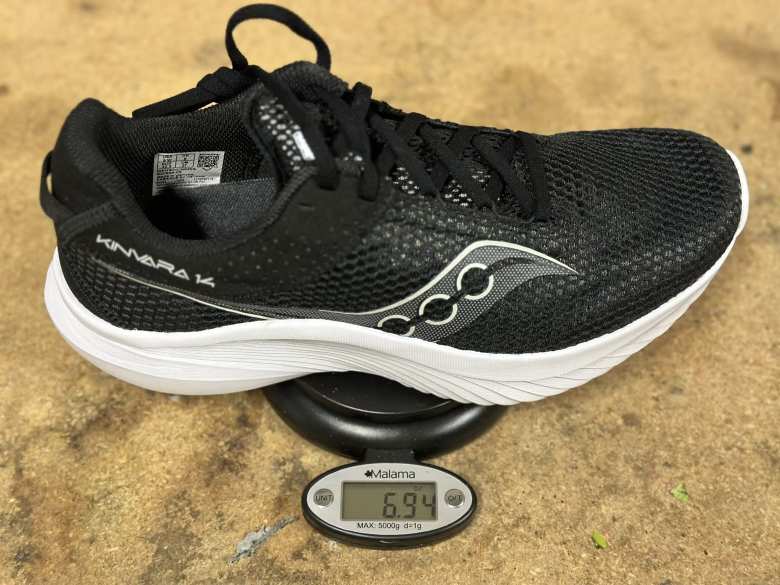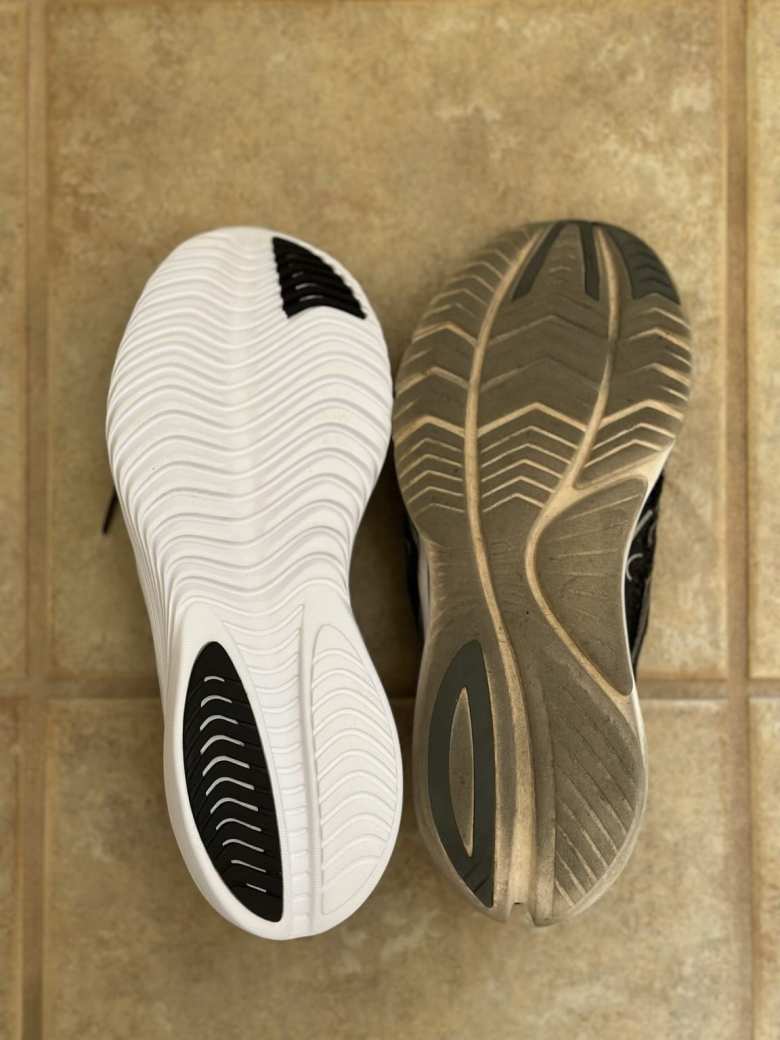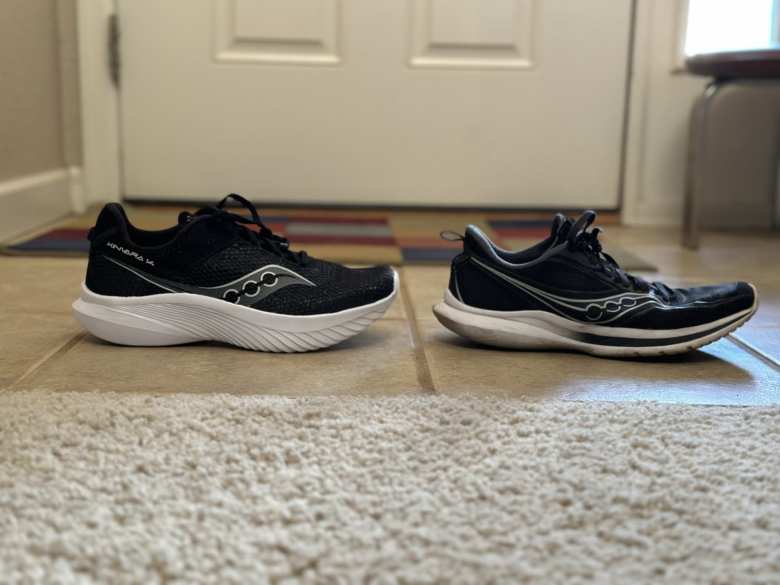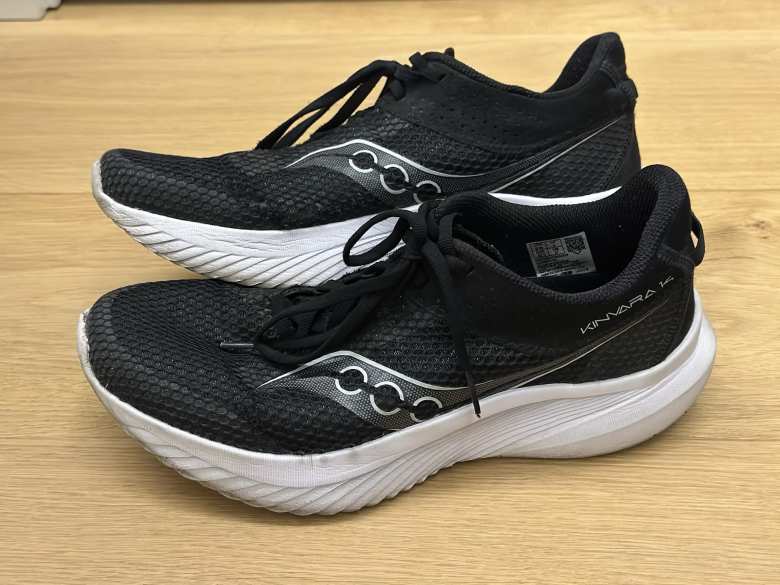Saucony Kinvara 14 vs. Kinvara 13: A Comparison
As written in previous articles, I’ve become a fan of the Saucony Kinvara 13, which I’ve been using since September 2022. The Kinvara 13 was a noteworthy successor to my minimalist Puma H. Street shoes, and I found it to be just as fast and responsive. However, with its discontinuation and the arrival of the Kinvara 14 in early 2023, I decided it was time to explore the next iteration.
Here’s a detailed comparison of the Saucony Kinvara 13 and 14, highlighting the key differences and similarities that may help you decide which shoe is right for you.
Flexibility and Comfort
All iterations of the Kinvara were renowned for their flexibility, imparting both comfort and a more “natural” feel. After testing the Kinvara 14, I can confirm it maintains the flexibility of its predecessor. For a visual demonstration, check out this video I made, below, showcasing the Kinvara 14’s flexibility.
Weight and Build
The Kinvara 14 is marginally lighter than the Kinvara 13. The size 9 Kinvara 14 weighs 6.94 ounces (197 grams), while the same size in the Kinvara 13 comes in at 7.45 ounces (212 grams).
The bottom line is both models are very light, but the 14 maintains a very slight advantage.

Stack Height and Heel Drop
Both models feature a 4 mm heel drop, maintaining a consistent profile. The Kinvara 14 has a slightly taller stack height with 31mm in the heel and 27mm in the forefoot, compared to the Kinvara 13’s 28.5mm heel and 24.5mm forefoot. This increase means the Kinvara 14 offers an additional 2.5mm of cushioning, which could enhance comfort and shock absorption. You also stand 2.5mm taller.
Cushioning and Stability
The thicker PWRRUN mid-sole in the Kinvara 14 feels more bouncy and cushioned compared to the Kinvara 13. Despite this, both models provide similar mild stability. They also both feature PWRRUN+ insoles. So if you enjoyed the balance of the Kinvara 13, you’ll likely find the 14 to be just as effective in this regard.
The Soles
Regarding sole durability, the Kinvara 14 features more black rubber under the forefoot and heel compared to the 13. This addition is designed to improve the lifespan of the sole, though I never found the Kinvara 13 lacking in this respect despite its exposed foam.
Additionally, fewer pebbles get lodged in the Kinvara 14 soles, which is a minor yet appreciated improvement.

Fit and Sizing
Reviewers have noted that the Kinvara 14 is narrower in the forefoot compared to the 13. If you like the fit of the 13 as I did, you should opt for the Wide version of the 14. Unfortunately, not all colorways are available in wide sizes, but my preferred black colorway is, so I was able to get a pair in the Wide fit.
Price
Both the Kinvara 14 and 13 had a manufacturer’s suggested retail price (MSRP) of $120. However, a year after their initial release, they are selling for significantly less: well under $100.
You can check the price of the Saucony Kinvara 14 on Amazon and the Kinvara 13 on eBay (since Amazon has depleted stock of the 13 as of this time of writing).
Conclusion
Overall, the Saucony Kinvara 14 is a commendable update to the popular Kinvara 13. It offers enhanced cushioning, a lighter build, and improved durability while retaining the flexibility that fans of the Kinvara series love. As long as you select the right width, I believe you’ll find the Kinvara 14 to be a great upgrade with no significant downsides compared to the 13.
I’ll continue using the Kinvara 14 and update this post as I log more miles, especially to see how it holds up over time. For now, it’s a solid choice for runners seeking a reliable and comfortable shoe with modern enhancements.

Update 2024-09-06
As with the Kinvara 13, the foam soles of the Kinvara 14 have held up well with plenty of tread left after 360 miles.
The uppers of the Kinvara 14 also seemed to last longer than than those of the 13, but remain the weakest point of the shoe. Sometime after 320 miles, the mesh fabric started to tear on the inner (big-toe) sides of the shoes.

Because the fabric on the shoe above is black, the torn mesh is hard to see. In addition, the fabric tears were not nearly as long as those generated on the Kinvara 13s after only 250 miles. I think a person could easily run another 100-300 miles on the 14s without having to worry about the tears becoming so large as to allow dirt or pebbles coming through.
That said, maybe Saucony knows the mesh is a weak point, because for their next iteration–the Saucony Kinvara 15–largely retained the foam soles (same foam and tread pattern, but with 1mm less stack height) while changing the mesh uppers to cloth. In theory, the 15’s uppers should be more durable, despite the overall shoe being marginally lighter still. The 15s also have a “normal” width and do not offer “wide” models.
But with the Kinvara 14s on sale for roughly half of the cost of the new 15s, I would still get the 14s! Especially since the 15s have large, gaudy “Saucony” lettering on the right side of the left shoe, and left side of the right shoe.

There are 2 comments.
I've been using the Saucony Cohesion line of running shoes. They are more affordable than the Kinvara but are heavier (9.4oz vs. 7.2oz) and have a larger heel-to-toe drop (12mm versus 4mm). Didn't realize the heel-to-toe drop was so high; might have try out the Kinvara the next time they are on sale. For my fast runs, I'm still using my original Endorphin Speed II shoes.
Adam, I'm pretty sure the Kinvaras will provide less support than your Cohesions. Are you still using orthotics? The Kinvaras are indeed lighter and flatter than the Cohesions. I imagine that the Kinvara 14 is springier as well now that it uses PWRRUN+ foam.
The Kinvara 14 is now just $60 on Amazon, or 50% off! I'm using size 9 Wide and think the fit is perfect. In contrast, the Endorphin Pro 3 shoes in size 9.5 were maybe a tad too small and caused black toenails.